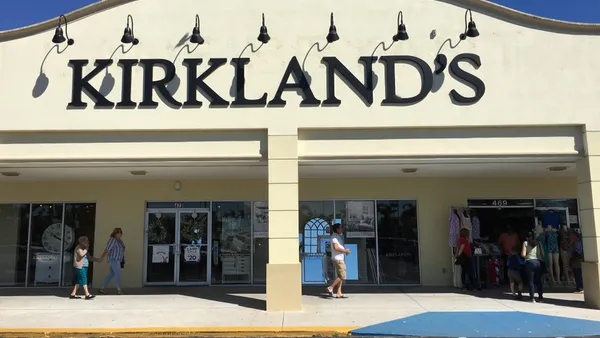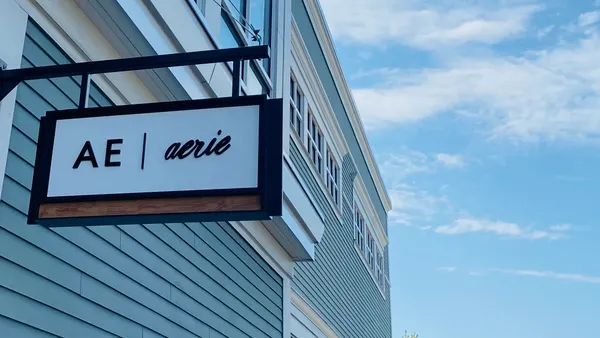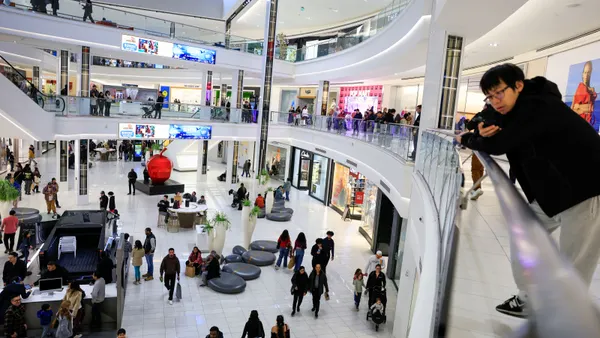Dive Brief:
-
American Eagle Outfitters on Tuesday reported that total third quarter net revenue rose 5%, or $43 million, to about $1 billion from $960 million last year, with the calendar shift bringing down results by $40 million. It was the apparel retailer's first $1 billion third quarter, brought about in part by double-digit growth in e-commerce, CFO Robert Madore told analysts Tuesday, according to a transcript from Seeking Alpha.
-
Overall store comps rose 8%. By brand in the quarter, American Eagle comps rose 5%, and Aerie's comps soared 32%, following a 19% increase last year, the 16th consecutive quarter of double-digit comp growth, according to a company press release.
-
Gross profit rose 7% to $399 million, as the gross margin rate expanded by 80 basis points year over year to 39.8% of revenue. Lower markdowns and rent leverage were slightly offset by increased delivery costs from rising e-commerce, the company said. Operating income fell $2 million, or 2%, to $109 million; operating margin was 10.8%, the company said.
Dive Insight:
The American Eagle brand's merchandise is resonating with its teen clientele, but its Aerie's business is "on fire," Madore told analysts Tuesday, noting the lingerie unit had the best comps ever. "We've said that for awhile."
The lingerie brand remains small compared to its flagship sibling, but soaring comps are "nice," according to Brian Kelly, president of consultancy Brian Brands, who said the brand could be taking meaningful share from segment giant Victoria's Secret.
The company is capitalizing on that by accelerating Aerie's brick-and-mortar expansion. The retailer is on track to open roughly 40 Aerie stores this year and five AE stores net of closures. Next year, the company will open 60 to 70 new Aerie locations and 15 to 20 American Eagle stores, according to Madore.
The American Eagle brand, meanwhile, plans to beef up competition by adding buy online, pick up in store, an escalation from the reserve-in-store option it now offers, brand chief Chad Kessler said. That could blunt the rising costs of digital sales fulfillment.
Inventory is another matter. Total ending inventories at cost in the quarter rose 11% to $592 million, which the company attributed to "strong customer demand," along with the timing of holiday receipts and its clearance store strategy. The fourth quarter could end with inventory up in the mid to high single digits, according to the company's release.
That could be a problem, and the retailer could also suffer from opening fewer flagship stores than it had planned, according to Kelly. "[Expenses] are up 14% with flat store count. Retailers have two easy ways to goose their bottom line: cut ad spend or payroll," Kelly said. "Spending on experience needs to drive topline, if not then profit suffers. And [their] inventory is high. Goods cost money. When inventory distorts, future profit percentage goes south."














